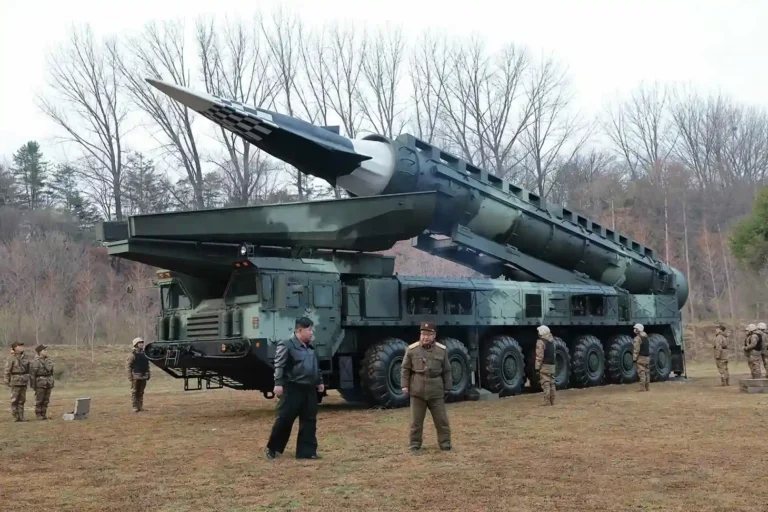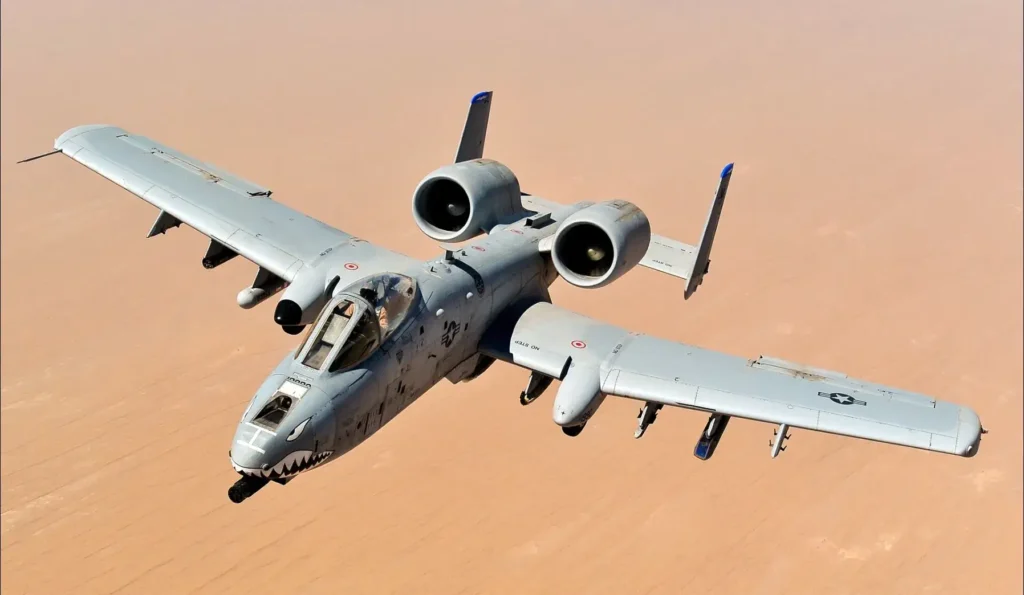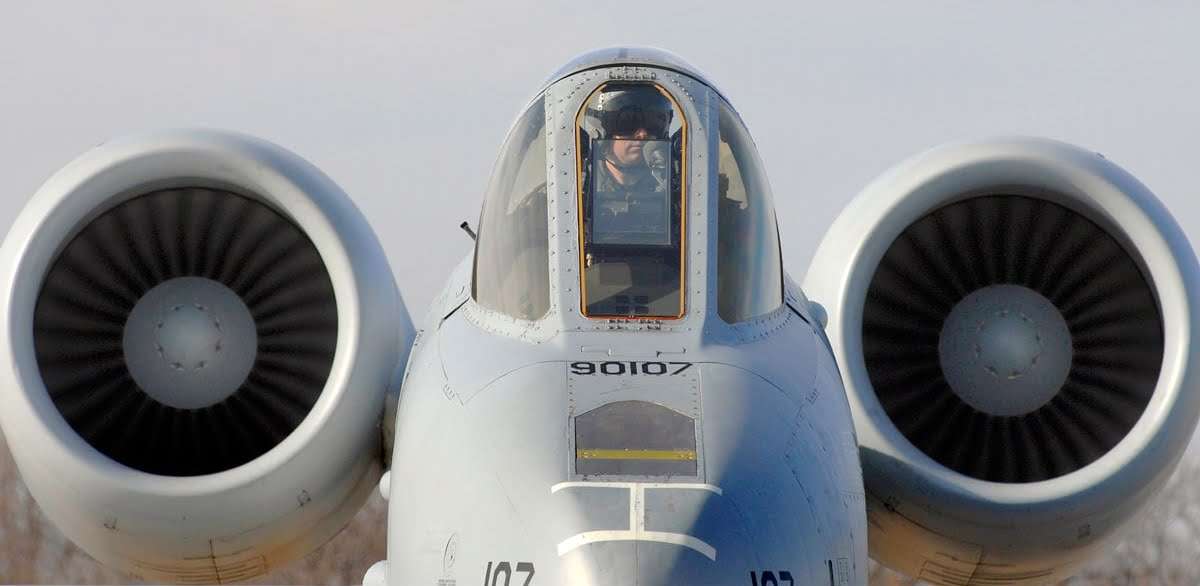Follow Us:

Share
The A-10 Thunderbolt II, also known as the A-10 Warthog, is a true legend among fighter aircraft. Initially introduced in the mid 1970s, the Warthog was a product of the A-X program initiated by the U.S. Air Force (USAF) in 1967. The USAF was looking for a close air support fighter capable of knocking out lines of Soviet tanks.

The A-10 was ultimately designated for this mission, not because of its speed, but for its survivability and manoeuvrability. It is important to note that it can perform excellent manoeuvrability at low air speeds and altitude and is a highly accurate and survivable weapons-delivery platform.
The aircraft can loiter near battle areas for extended periods of time and operate in low ceiling and visibility conditions. The wide combat radius and short take-off and landing capability permit operations in and out of locations near front lines. Using night vision goggles, A-10 pilots can conduct their missions during darkness.
Regarding its performance, the Warthog’s first wartime mission came not against Soviet tanks but in 1991 during the Persian Gulf War. In that conflict, the Warthog’s famed 30-millimeter GAU-8 Avenger rotary cannon was used to tear through Iraqi armor units.
Since the Persian Gulf, the A-10 has flown in just about every other post-Cold War U.S. conflict, including Kosovo in 1999 during NATO’s Operation Allied Force, in Iraq and Afghanistan, and against ISIS since at least 2014.
In each conflict to which it is deployed, the Warthog is recognized not only for its impressive cannon, but also its numerous fail safes and redundancies.
Indeed, the A-10 is structurally constructed to continue flying even after significant damage. It is said that the Warthog is able to fly with half of its tail, half of its wing, and even with one engine and elevator.
Also, the plane’s cockpit popularly known as a “titanium bathtub,” protects pilots from anti-aircraft guns up to 23 millimetres.
What seems to be important is that the Warthog can load a lot more than just its cannon. It has 11 external hardpoints for carrying electronic countermeasure equipment, fuel tanks, bombs and missiles.
It can carry up to 24 500-pound bombs, four 2,000-pound bombs, or six AGM-65 Maverick air-to-ground missiles, making it capable of carrying out multiple types of frontline missions.

Precisely, the A-10 could not survive against high-tech anti-aircraft-equipped countries such as China and Russia. The Warthog thrives against low-tech enemies with poor air-defence, such as ISIS and the Taliban.
Facing the aforementioned Chinese and Russian systems would require the A-10 to have additional support. One alternative solution that has been suggested would be to pair the fighter with air-defence suppression drones, opening the skies up for the A-10’s entry.
The A-10 could rely on the Maverick missile or the Small Diameter Bomb to take out enemy targets.
It is estimated around 280 A-10s still remain in service with USAF, Air Combat Command, Air Force Reserve, and Air National Guard, and Congress seems intent on keeping that number high
A tremendous effort is underway, yet it remains to be seen if the A-10 will remain on the battlefield through 2040 as optimists predict, or if the USAF will get its way, turning the A-10 out to pasture long before its usefulness will have expired.
With all its superiority, the A-10 Warthog is showing its age and is not as modern or stealthy as the F-22 or F-35 fighter jet. However, when it comes to killing tanks, its skills are undeniable.
The US Air Force demonstrated that the A-10 Thunderbolt II, a close-air support mission plane that has been in service for over 40 years, is able to knock out modern tanks equipped with Armor improvements using its powerful cannon.
This first-ever test was held on February 14th, 2022, at the Nevada Test and Training Range, according to a press release. Each test flight featured a pair of A-10Cs firing armour piercing incendiary rounds against two surrogate main battle tanks equipped with ERA.
The pilots varied attack parameters and direction in order to evaluate weapons effects against the up-armoured targets. Through post-shot analysis of video, photo imagery, and visual inspection of the targets, analysts were able to establish the battle damage caused upon the tanks and determine that the tanks were rendered inoperative.
“A typical A-10 gun employment requires 120 rounds, which means an A-10 is capable of employing fires on nine to ten targets before exhausting its gun munitions,” said Maj. Kyle Adkison, 422nd TES A-10C division commander. “
A-10 formations can engage nearly 40 armoured vehicles with 30 millimetre ammunition against big fielded forces, which seems to be a significant amount of firepower.
The test gathered the information on the effectiveness of the AGM-65L Maverick and AGR-20E Advanced Precision Kill Weapons System against armoured vehicles in addition to 30mm cannon rounds.
“Since the notion was developed in 2020, this has been a continual test effort,” said 1st Lt. Christopher Earle, 59th TES A-10C operations test analyst. “
Now that it’s been proven to work, we’ll work on testing various types of anti-armour bombs in the Air Force inventory against ERA and gathering more data. It can be said that the A-10 is well suited for Agile Combat Employment, and this test demonstrated that in a disputed area, the A-10 can continue to deliver massive rapid firepower with serious consequences on enemy tanks.
Share
Defense Feeds is publication focusing on informing, engaging, and empowering the world by providing accurate information from defense technology.
Powered by Defense Feeds © 2025 – All rights reserved.